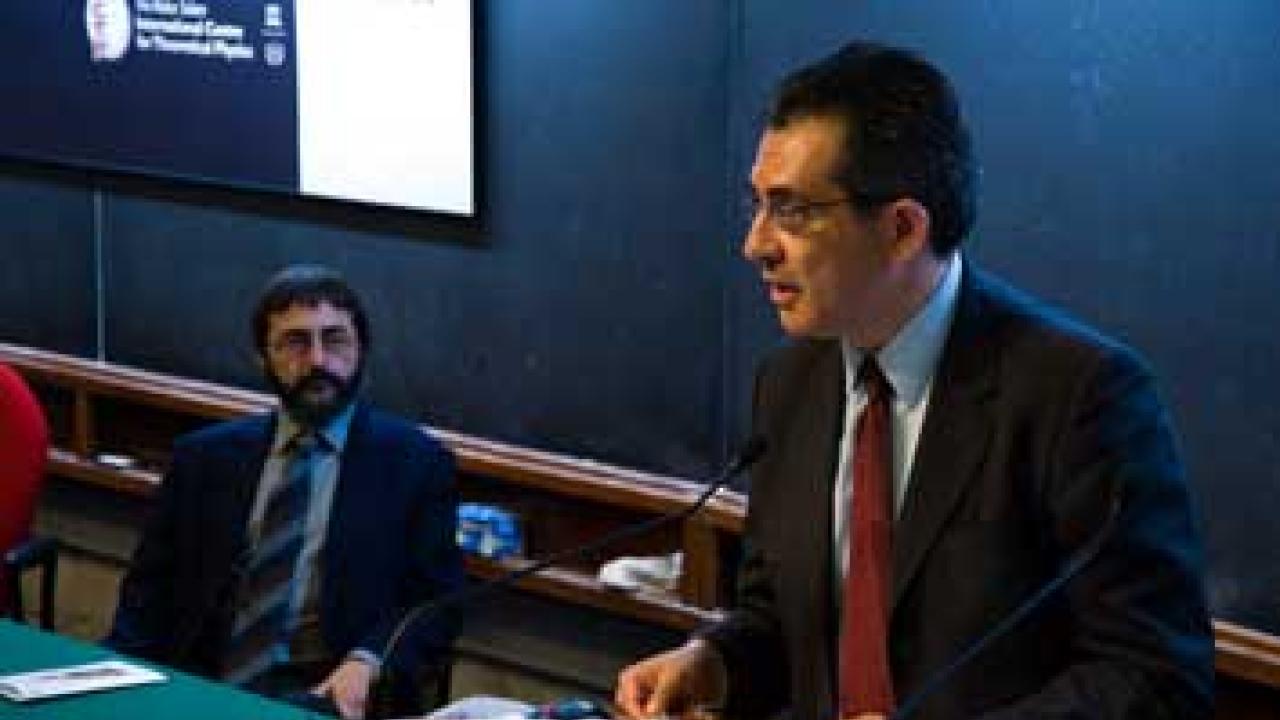
Days before his fortieth birthday, Ernesto Lupercio arrived at ICTP to accept the 2009 Ramanujan Prize for Young Mathematicians from Developing Countries. The gregarious and energetic researcher is known for his outstanding contributions to mathematical physics, geometry, and algebraic topology, and for cultivating mathematics in Mexico. He is an investigator at the Centro de Investigacion y de Estudios Avanzados del Instituto Politecnico Nacional in Mexico City (CINVESTAV).
"I have enormous respect for the other winners of the Ramanujan Prize and could not have possibly imagined something like this happening to me," Lupercio says. "This is also a prize for Mexican mathematics, which has come a long way since its inception."
Lupercio names dozens of colleagues from all over the world who have influenced his work and has a notable talent for starting collaborations.
"He is really making a difference in the Mexican mathematics community," says Jose Seade, a mathematician at the Universidad Nacional Autonoma de Mexico in Cuernavaca, Mexico, who is currently visiting ICTP. "He has changed the face of mathematics in our country."
Like many researchers from developing countries, Lupercio earned his doctorate abroad, at Stanford University in 1997. He was a postdoctoral fellow at the Max-Planck-Institut fuer Mathematik in Bonn, Germany, and then continued his professional career in the United States. But he returned to Mexico in 2003 for a position at CINVESTAV.
"We are at a breaking point in Mexican mathematics, where a student can do serious Ph.D. work here in Mexico without having to leave the country," Lupercio says. "I have several students graduating in the next four months and I believe their thesis work is as good as that from Stanford or Berkeley."
Lupercio's research revolves around the properties of spaces. Among other accomplishments, he helped lay the foundations of the theory of gerbes over orbifolds. His recent work with young mathematicians introduced the concept of loop orbifolds. The research incorporates ideas of leading theorists such as Edward Witten, Dennis Sullivan, and Maxim Konsevich, according to Seade.
Lupercio's work interacts with diverse subjects from quantum field theory and string theory to economics. He finds it deeply meaningful that mathematics has implications for the physical world.
"We humans somehow are lucky enough to walk in the mathematical garden and look at these objects," Lupercio says. He says he feels astonished that “the walk in the mathematical garden has anything to do with a walk in physical reality."
Yet advances in mathematics do often drive technological progress and benefit society. This link should not go unnoticed by the governments of developing countries, says Seade, adding that funding for mathematics is still scarce in many places. The US$15,000 component of the Ramanujan Prize can be a vital contribution toward research.
"Unfortunately, the Mexican government, like those of many other countries, still doesn't understand that you have to invest in science," Seade says. "They don't realize that if you want to become a developed country, you need science."
Lupercio was awarded the Ramanujan Prize on the ICTP campus at 15:00 Tuesday, July 13. To find out more, go to http://prizes.ictp.it/Ramanujan.
















